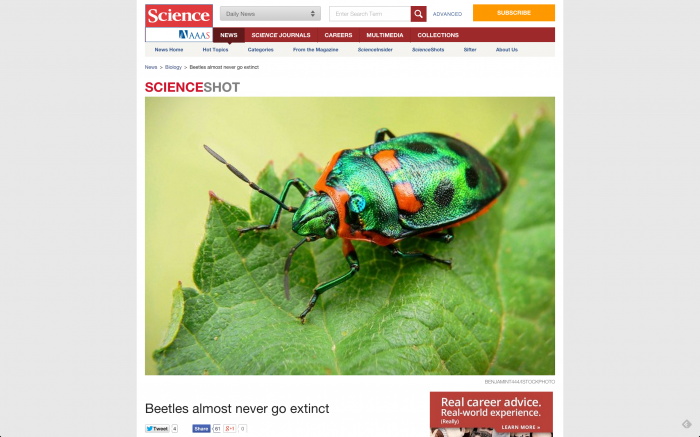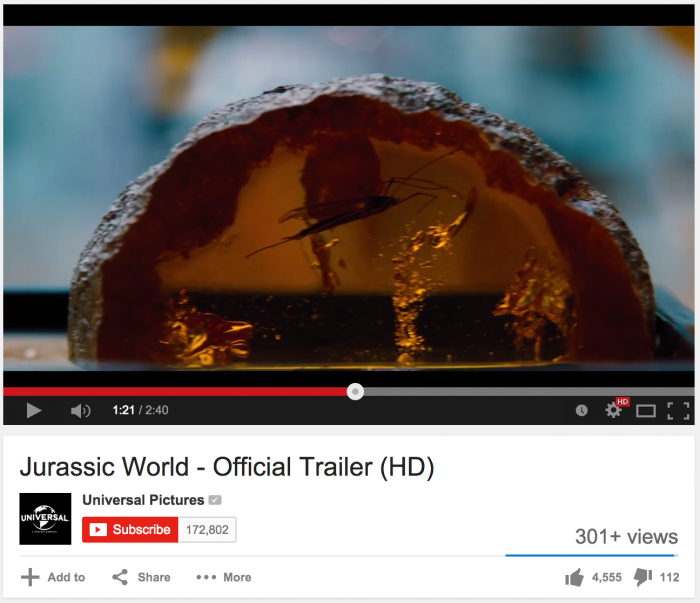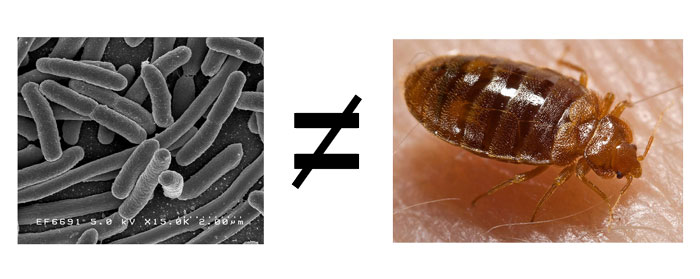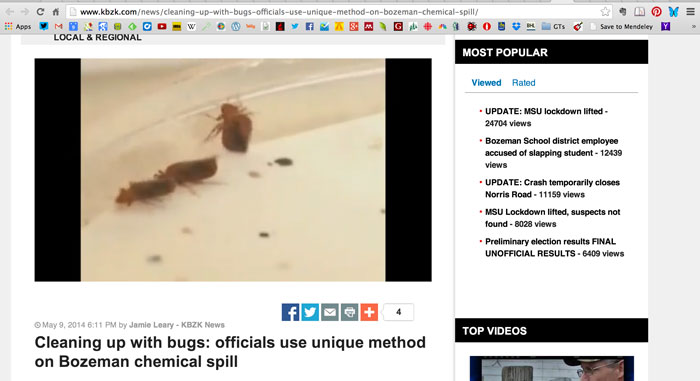On the scale of 1 to What On Earth Has Gone Wrong, this ranks somewhere out near Pluto.
Check out this news article published by Science Magazine. Yes, *that* Science Magazine.

Beetles almost never have sucking mouthparts either. And are almost never in the order Hemiptera. Almost.
To illustrate an article about beetles, Science Magazine used a stock image of a shield bug (Hemiptera: Scutelleridae). The publication that can literally make or break careers in academia by judging our science worthy to grace its pages apparently can’t be bothered to check the differences between beetles and bugs.
Obviously they aren’t the first to publish an embarrassing taxonomy fail (every entomologist has their personal favourite example), but it blows my mind each and every time one turns up.
I accept that not everyone knows the difference between a shield bug and a beetle. It’s not a piece of information that is routinely taught outside of specialized university courses. But did the author of the news article fact check the scientific paper that was the focus of the story, or check his sources to make sure they weren’t blowing smoke? I assume he did. I hope he did.
So why wasn’t the random stock photograph, or the photographer who captioned the photo, held to the same standard and fact checked to ensure it was actually, you know, a beetle? What about a photograph pulled from a stock agency lends itself to unconditional trust? Do people assume that because it was available in this “gated” database that someone along the way must have known what they were talking about? iStockPhoto, the agency the photo was licensed from, markets themselves as a cheap source of stunning imagery, and we all know what happens when we value low prices over high quality:
Almost never what we want.
UPDATE: Science Magazine finally corrected the photo, and the story is now illustrated with a fossil weevil, which makes much more sense. But, here’s the correction they added:
*Correction, 18 March, 10:27 a.m.: The image that originally accompanied this article (a mislabeled stock photo of a bug, not a beetle) has been replaced.
Or alternatively, “It’s not our fault we originally included a photo of a bug instead of a beetle, that’s how it was labelled on the internet!”, which is positively laughable. I wouldn’t accept that excuse from my undergraduate students, never mind from a scientific publisher that lauds itself as one of the most prestigious journals in all of science.
The bigger problem for Science however, is that the image wasn’t even mislabelled by the stock agency or photographer! Nancy Miorelli and Timothy Ng found the original image on iStockPhoto, which is clearly labelled “Jewel bug – Stock Image”, and in the description as “A jewel bug on a leaf”. One of the keywords applied to the image is in fact “Beetle”, which is obviously not correct, but clearly Science has no one to blame but themselves here, and their weak attempt at shifting that blame is repulsive.





